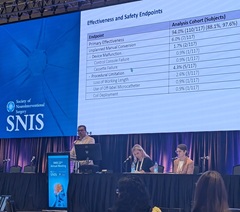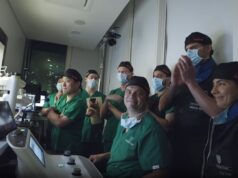
Six-month follow-up results from a “pioneering” trial of robotic-assisted neuroendovascular aneurysm embolisation using the CorPath GRX system (Siemens Healthineers) were presented by Vitor Pereira (University of Toronto, Toronto, Canada) on behalf of the study investigators at this year’s Society of NeuroInterventional Surgery (SNIS) annual meeting (14–18 July, Nashville, USA).
The adjudicated six-month results from this prospective, single-arm, international, multicentre non-inferiority study demonstrated the safety and effectiveness of robotic-assisted neuroendovascular aneurysm embolisation. An SNIS press release notes that these results represent a “significant milestone”, as they constitute the only published midterm clinical follow-up data on this specific aneurysm treatment to date.
The study enrolled 117 patients across 10 clinical sites and was conducted by 14 neurointerventionists spanning six countries. It included both a premarket study in Canada and post-market studies in Australia, Austria, France, Spain, and Switzerland.
Key findings presented by Pereira included a 94% technical success rate, which saw the study achieve its primary effectiveness endpoint—defined as successful completion of the robotic-assisted neuroendovascular procedure without unplanned conversions to manual intervention. In addition, an immediate complete occlusion (Raymond-Roy occlusion classification [RROC] 1) rate of 64.5% increased to 94.1% at six months, while favourable clinical outcomes—defined as a modified Rankin scale (mRS) score of 0–2—were observed in 98.9% of patients (87 out of 88) at six months.
“The six-month results of the CorPath GRX trial represent a significant step forward in the evolution of neuroendovascular robotics, and will play a key role in shaping future innovation in the field of neuroendovascular therapy,” Pereira commented. “I am excited to share this news with the community. It shows that robotics in neuroendovascular interventions could provide precision and support to the physician, even in navigating tortuous anatomy and treatment of complex aneurysm cases.”
The SNIS’ recent release notes that the neuroendovascular robotic-assisted CorPath GRX trial was sponsored by Siemens Healthineers—and the company is currently continuing to invest in the development of its next-generation neuroendovascular robotic platform.









